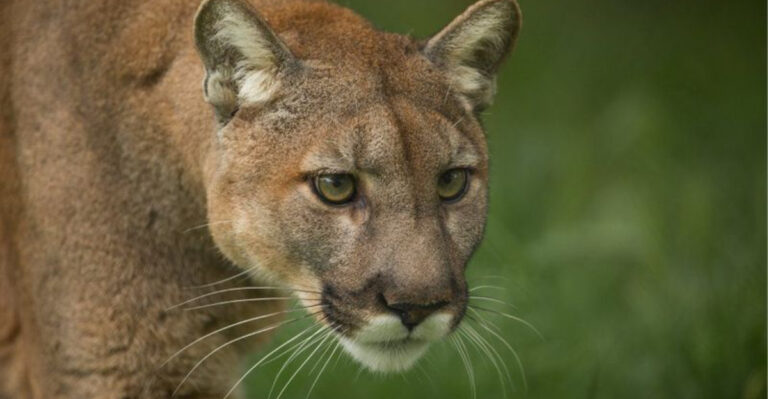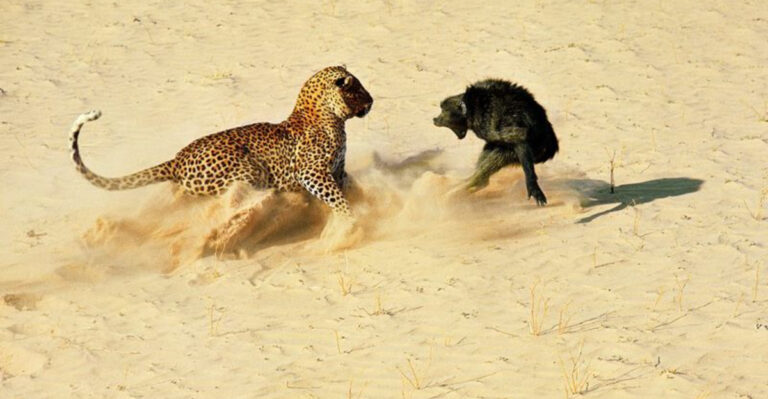Bizarre Deep-Sea Creatures Found Off The Coast Of Oregon
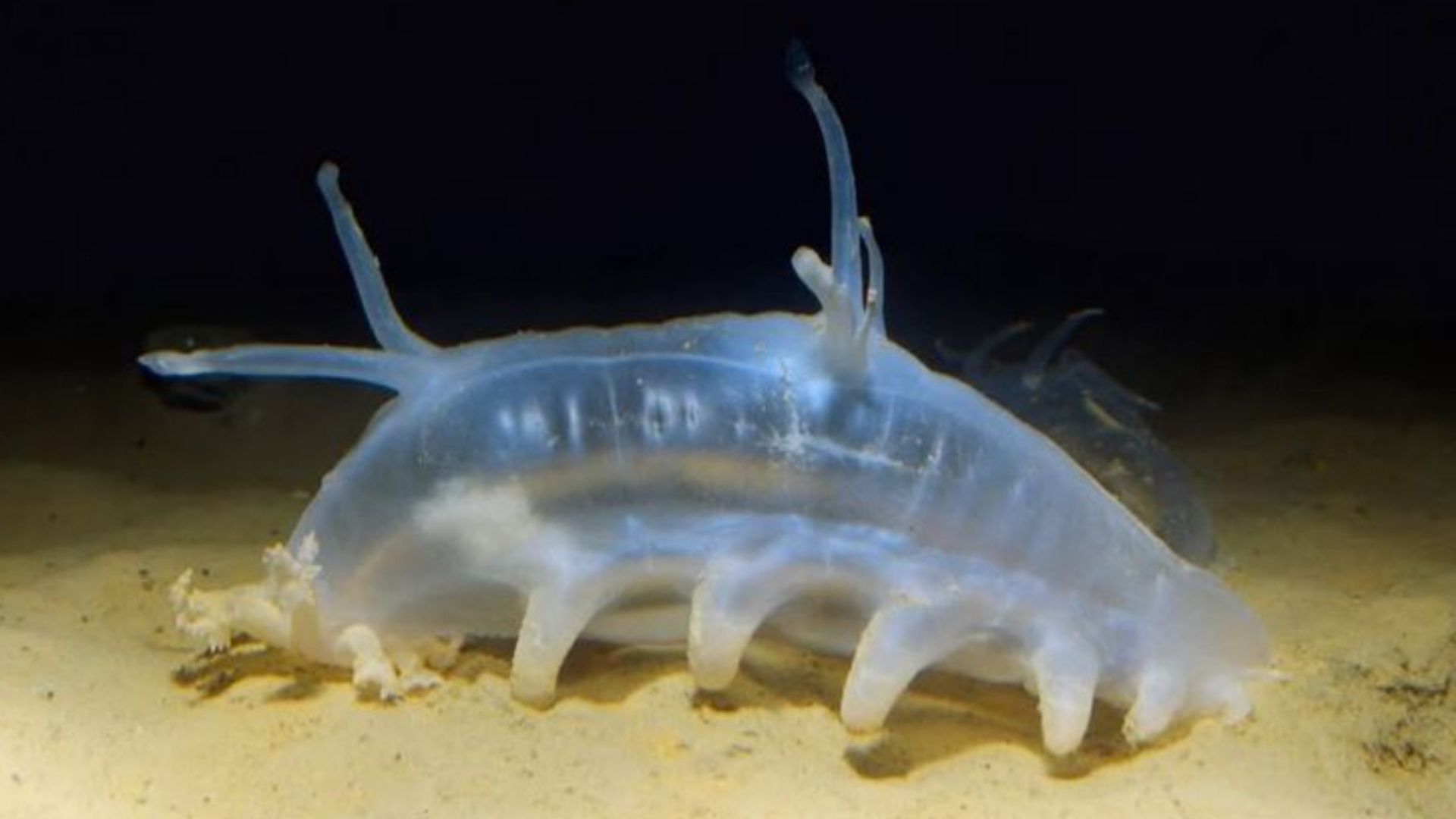
The ocean holds some of the strangest and most mysterious creatures, especially in its darkest depths. Off the coast of Oregon, the deep sea is home to bizarre, otherworldly species rarely seen by humans.
With glowing bodies, alien-like shapes, and eerie features, these creatures look like something from a sci-fi movie. Some are masters of disguise, while others have adaptations that seem almost unreal.
The deeper you go, the weirder it gets! Let’s take a look at some of the strangest deep-sea creatures found off Oregon’s coast.
1. Giant Pacific Octopus
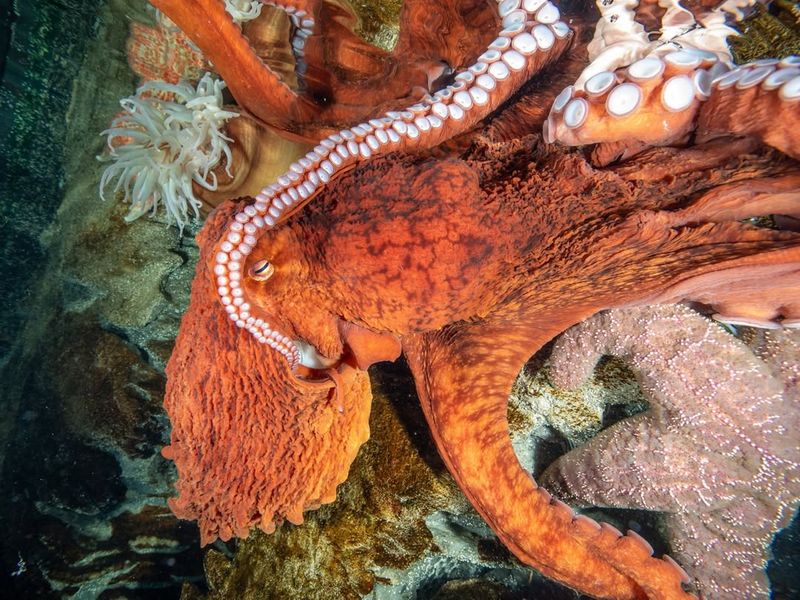
The giant Pacific octopus is a master of disguise, blending seamlessly into the rocky ocean floor. With its reddish-brown color and a span of up to 16 feet, it is a sight to behold. This cephalopod is known for its intelligence, capable of solving puzzles and opening jars. Its ability to change color and texture provides camouflage and communication with other octopuses.
In the cold waters off Oregon, it thrives, using its tentacles to explore and capture prey. The octopus’s diet consists mainly of crabs, clams, and fish. It employs a hard beak to pierce through shells and exoskeletons. Living in dens, it guards its territory fiercely. Females lay thousands of eggs, tending to them diligently until they hatch.
This nurturing behavior, however, leads to the end of the female’s life cycle. These octopuses are solitary creatures, coming together only to mate. With a lifespan of three to five years, their existence is both fleeting and fascinating. Their presence in Oregon’s deep waters adds to the rich biodiversity of the area, intriguing scientists and divers alike. Truly, the giant Pacific octopus is a marvel of the deep sea.
2. Vampire Squid
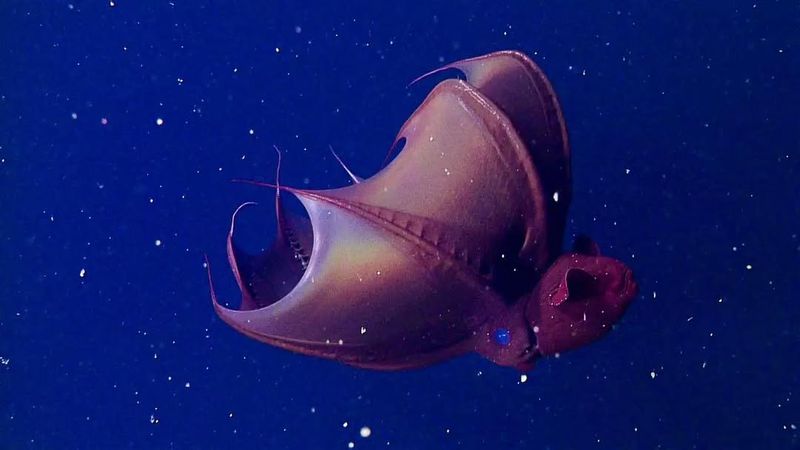
The vampire squid is a creature of the abyss, lurking in the oxygen minimum zones of the deep ocean. Its name might evoke horror, but this little guy is more of a softie. With a body resembling a cloak, it captures food particles in its sticky tentacles. Its bioluminescent displays are both beautiful and functional, confusing predators and attracting mates. The vampire squid’s gelatinous body allows it to withstand immense pressures.
Found off Oregon’s coast, it thrives in cold, dark waters. Despite its fearsome name, it poses no threat to humans. Instead, it feeds on marine snow – organic debris that drifts down from the surface. The vampire squid’s unique adaptations make it a subject of scientific interest. It can invert its cape-like webbing to create a defensive posture, adding to its enigmatic allure. Its ability to emit light through photophores gives it an otherworldly glow.
As a living fossil, it has changed little over millions of years, offering a glimpse into the ocean’s ancient past. Compact and resilient, the vampire squid remains one of the most mysterious inhabitants of the ocean’s depths.
3. Anglerfish
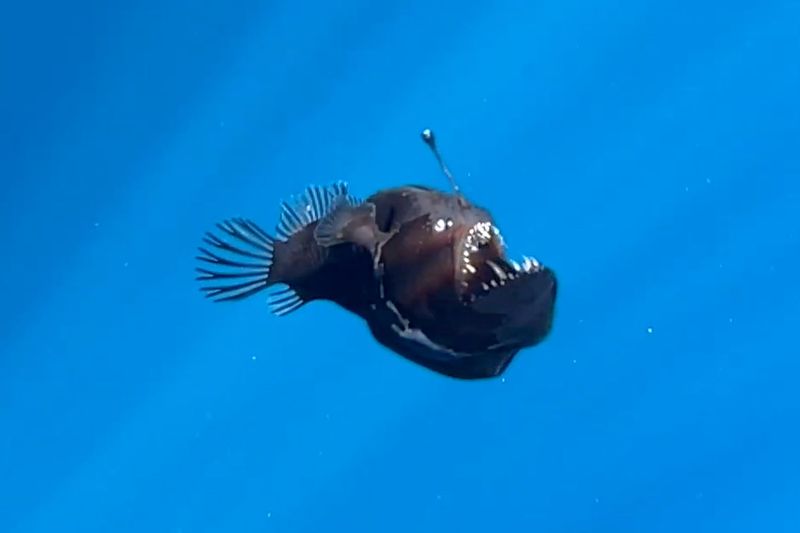
The anglerfish is a master of deception, using its bioluminescent lure to entice unsuspecting prey. This deep-sea predator is rarely seen, residing in the dark, cold depths of the ocean. Found off Oregon’s coast, it is known for its eerie appearance and unique hunting techniques.
With its sharp teeth and expandable stomach, it can consume prey twice its size. Female anglerfish are the hunters, while males are significantly smaller and parasitic, attaching themselves to females for survival. The anglerfish’s lure is a modified fin that contains bioluminescent bacteria, creating an irresistible glow in the murky depths.
This light not only attracts prey but also potential mates. Despite its ghastly appearance, the anglerfish plays a crucial role in the oceanic food web. Its adaptations allow it to thrive in an environment with scarce resources. The female’s ability to produce thousands of eggs ensures the continuation of the species.
The anglerfish’s bizarre lifestyle and appearance make it a subject of fascination and study. Indeed, it embodies the strange and wonderful nature of life beneath the waves.
4. Deep-Sea Dragonfish
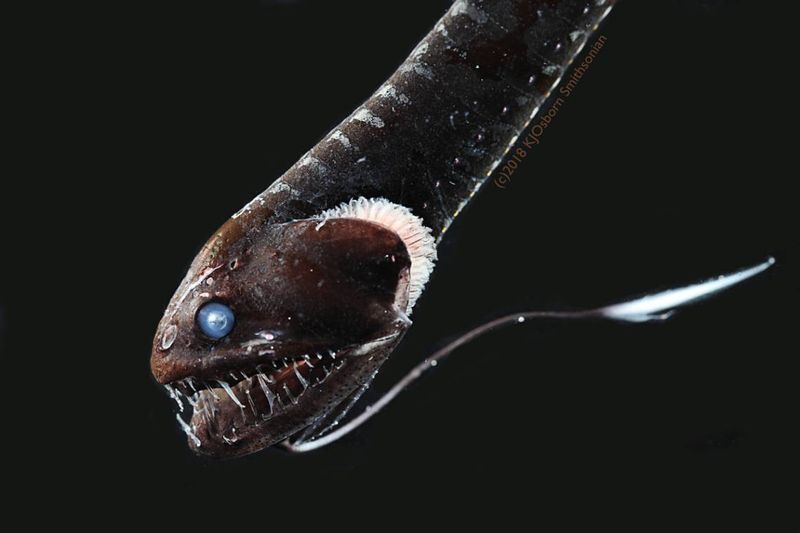
Dwelling in the lightless depths, it is equipped with a set of adaptations fit for fiction. Its luminescent barbel dangles enticingly, luring prey toward its fang-like teeth. This carnivorous fish is a master of the dark arts, using bioluminescence not only to hunt but also to communicate. Found off the coast of Oregon, the dragonfish thrives in the perpetual night of the deep ocean.
Its body is long and slender, allowing it to navigate the depths with grace. The dragonfish’s photophores emit light in various colors, aiding in hunting and camouflage. Its ability to produce red light, invisible to most deep-sea creatures, gives it a distinct advantage. This fish’s lethal combination of stealth and surprise makes it a formidable predator.
Within the deep-sea ecosystem, the dragonfish plays a vital role. Its existence highlights the extraordinary adaptations of life in extreme environments. A true marvel of evolution, the deep-sea dragonfish stands as a testament to nature’s ingenuity.
5. Dumbo Octopus
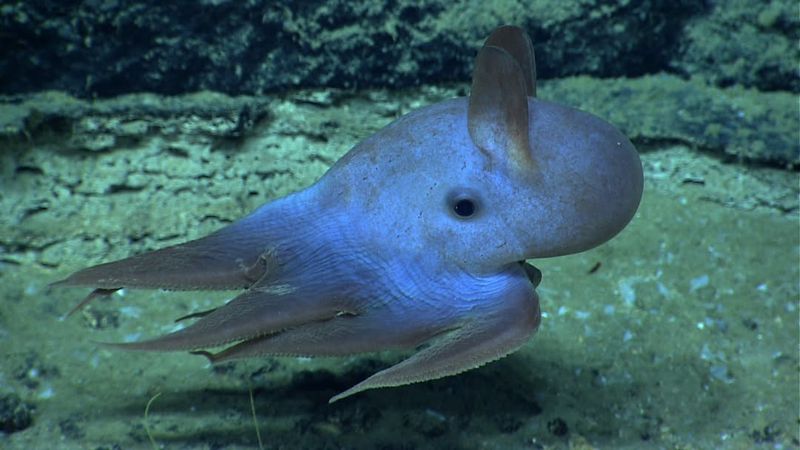
Found in the deep waters off the coast of Oregon, it glides gracefully through the ocean’s inky depths. Unlike its terrestrial namesake, the dumbo octopus is a master of the deep, thriving in extreme conditions that would challenge most creatures. Its gelatinous body can withstand immense pressures, allowing it to inhabit depths of up to 13,000 feet.
Feeding on crustaceans, worms, and other small prey, it uses its fins to steer and hover with precision. The dumbo octopus’s gentle demeanor belies its adaptability and survival skills. Its ability to change color helps it blend with its surroundings, avoiding predators. It lacks an ink sac, a common feature in other octopuses, relying instead on its agility and camouflage.
A subject of scientific intrigue, this octopus continues to surprise researchers with its unique behaviors. Its presence in the deep sea enriches Oregon’s marine biodiversity, making it a beloved figure in the underwater world. Truly, the dumbo octopus is a whimsical wonder of the ocean depths.
6. Pelican Eel
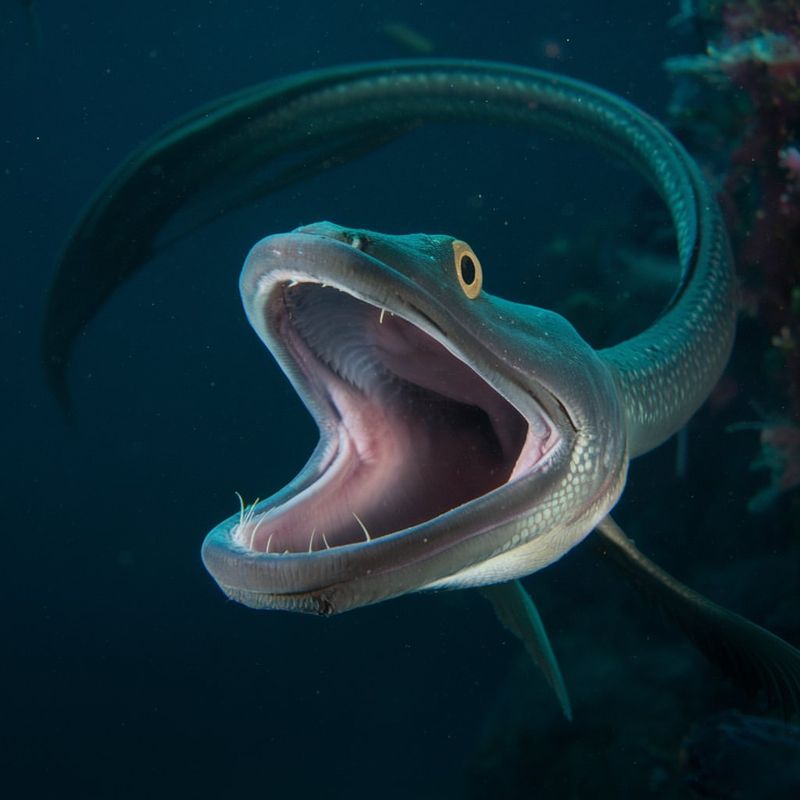
The pelican eel is an oddball of the deep sea, boasting a mouth that would make even the most seasoned angler gawk in awe. Its jaw can open wide enough to engulf prey much larger than its slender body. Found in the deep waters off Oregon, this eel is a marvel of adaptability. Its expandable stomach allows it to consume large meals, a handy trait in a world where food is scarce. Despite its fearsome feeding apparatus, the pelican eel is a graceful swimmer, using its whip-like tail to glide through the abyss.
Its sense of wonder doesn’t stop at its mouth; it sports a bioluminescent organ at the tip of its tail, adding to its mystique. The pelican eel’s unique features make it an object of study and fascination among marine biologists. It changes color from black to a more transparent hue during development, a feature that continues to intrigue scientists.
Though it may look bizarre, the pelican eel’s adaptations are perfectly suited to its deep-sea environment. This enigmatic creature adds to the rich tapestry of life found beneath Oregon’s waves, reminding us of the ocean’s boundless creativity.
7. Blobfish
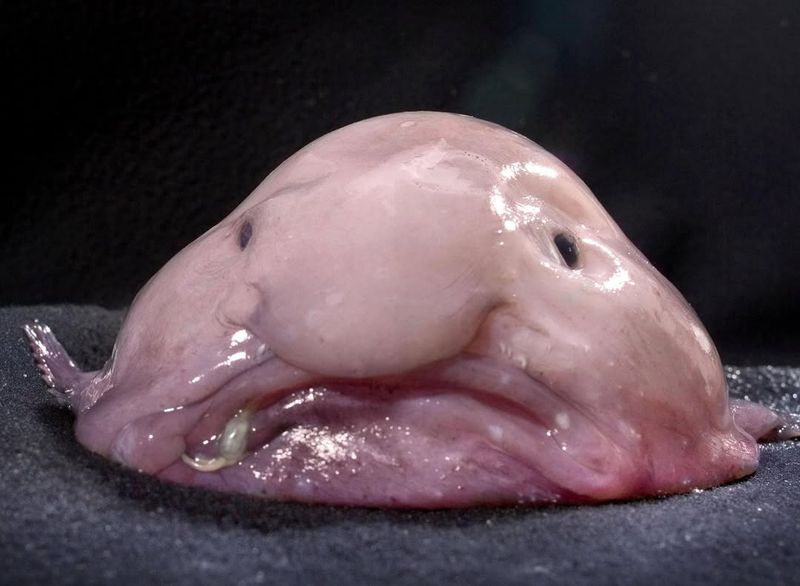
The blobfish is the poster child for unconventional beauty, often dubbed the ugliest fish in the sea. But this gelatinous creature is perfectly adapted to its deep-sea habitat. Found off the coast of Oregon, it resides at depths where the pressure would crush most other animals. Its lack of a swim bladder makes it buoyant in high-pressure environments, allowing it to hover just above the ocean floor.
The blobfish’s somewhat comical appearance out of water is due to its lack of muscle, which is unnecessary in the dense, supportive depths. Its diet consists of edible matter that floats by, which it ingests effortlessly. Though its looks have earned it internet fame, the blobfish’s survival adaptations are no laughing matter. It thrives in conditions that would be inhospitable to most, showcasing the wonders of evolutionary design.
This fish serves as a reminder that beauty is in the eye of the beholder, and that survival often trumps aesthetics. By embracing its unique form and function, the blobfish contributes to the diversity of life beneath Oregon’s ocean waves.
8. Goblin Shark
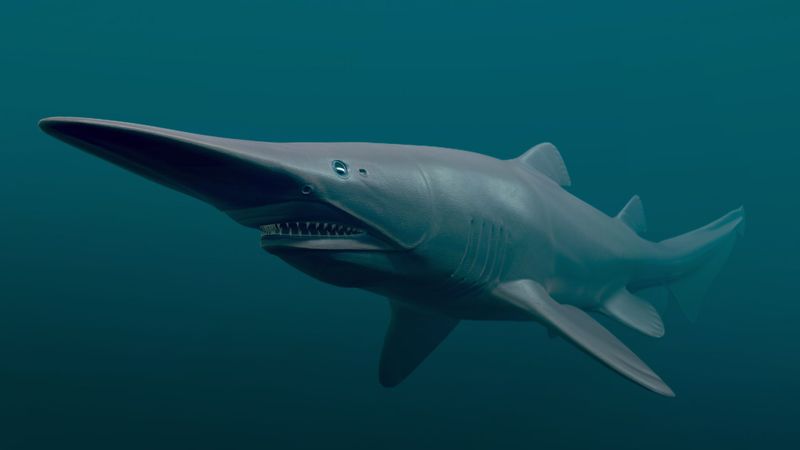
This creature’s lineage dates back millions of years, earning it the nickname of a living fossil. The goblin shark’s most striking feature, its slingshot-like jaw, allows it to catch prey with lightning speed. Its skin is pale pink, almost translucent, giving it a ghostly appearance.
The goblin shark is rarely seen, preferring to stay in the dimly lit, deep ocean. Despite its fearsome appearance, it poses no threat to humans, feeding primarily on fish, squid, and crustaceans. Scientists are fascinated by its unique adaptations, which provide insight into evolutionary history. Its eyes, set far back on its head, help it detect faint movements in the dark waters.
The goblin shark’s bizarre yet functional anatomy showcases the diverse strategies life employs to thrive in the deep sea. It stands as a testament to nature’s boundless creativity, adding to the enigmatic allure of Oregon’s oceanic depths.
9. Frilled Shark
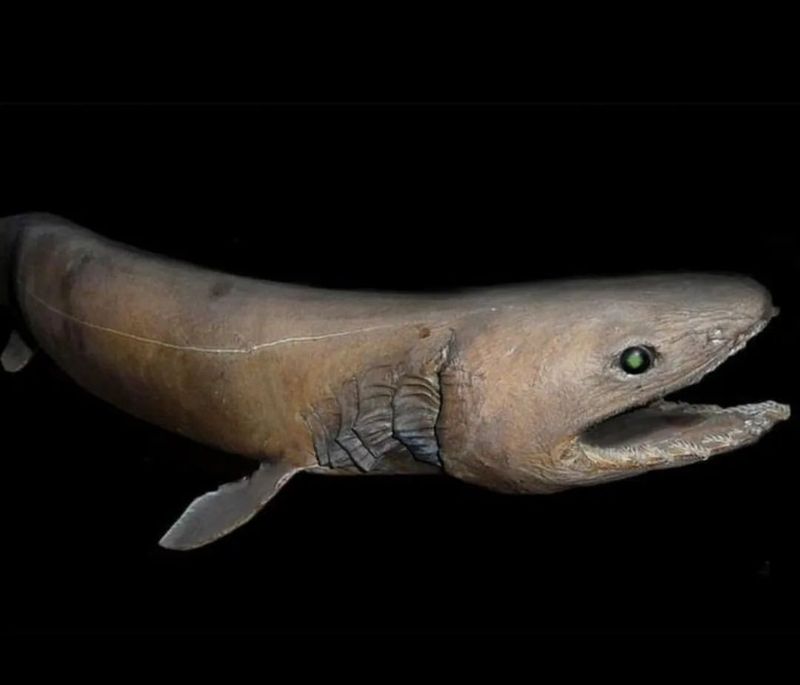
With its eel-like body and rows of needle-sharp teeth, it navigates the deep waters off Oregon’s coast. This ancient creature has remained relatively unchanged for millions of years, making it a subject of scientific intrigue. The frilled shark’s name comes from its frilly gill slits, which resemble a Victorian ruff.
Despite its fearsome appearance, it is a slow-moving predator, relying on stealth and surprise to catch its prey. The frilled shark’s diet consists mainly of squid, which it swallows whole using its flexible jaws. Its ability to open its mouth wide makes it a formidable predator in the deep. Found at depths of up to 5,000 feet, it thrives in environments where other sharks would struggle.
The frilled shark’s adaptations provide a window into the evolution of deep-sea life. Its mysterious presence adds to the rich tapestry of marine life off Oregon’s coast. Truly, the frilled shark is a fascinating glimpse into the past, surviving in the shadowy depths of the ocean.
10. Hatchetfish
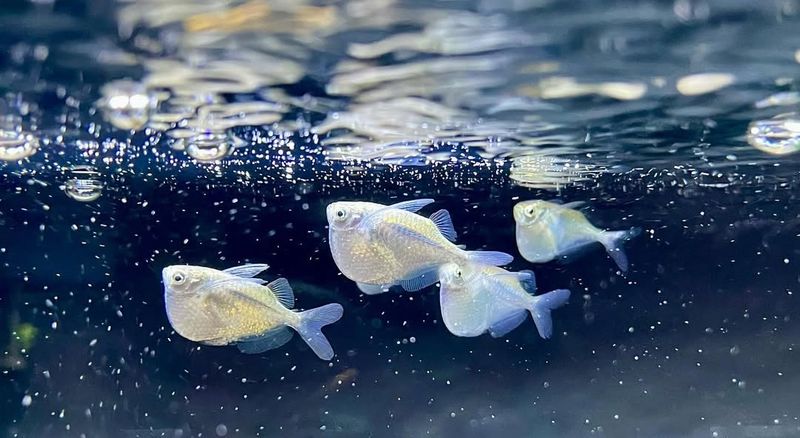
This small fish is found off Oregon’s coast, where it uses its metallic sheen to blend with its surroundings. Its name comes from its hatchet-shaped body, which serves as both camouflage and means of propulsion. The hatchetfish’s bioluminescent photophores line its belly, producing a blue glow that mimics the faint sunlight filtering through the ocean’s depths.
This light helps it avoid predators lurking below. Despite its diminutive size, the hatchetfish is a skilled hunter. It feeds on plankton and small crustaceans, employing a vertical migration strategy to access food. By day, it resides in the dark, deep waters, ascending at night to feed. This behavior maximizes its chances of survival, showcasing its adaptability.
The hatchetfish’s existence highlights the intricate balance of life in the deep sea. Its unique adaptations have fascinated scientists, offering insights into the complexities of marine ecosystems. Indeed, this tiny fish adds a shimmering thread to the vibrant tapestry of life beneath Oregon’s waves.
11. Gulper Eel
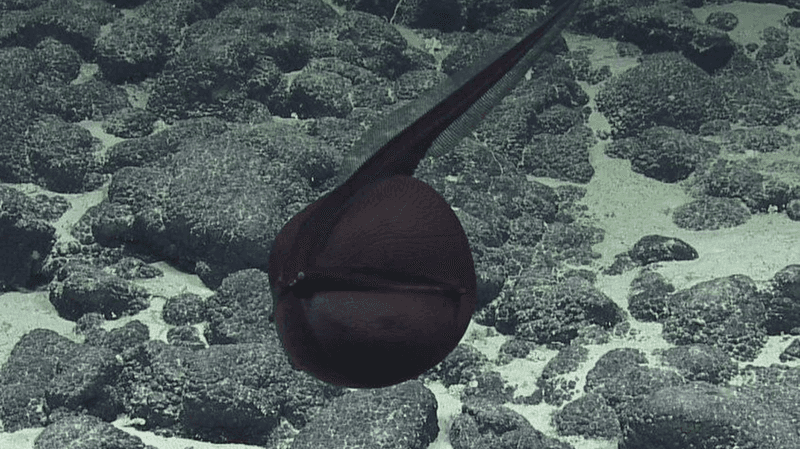
The gulper eel is a true oddity of the deep sea, with a mouth that rivals its entire body in size. This remarkable feature allows it to consume prey much larger than itself, a handy adaptation in an environment where meals are few and far between. Found in the dark waters off Oregon, the gulper eel is an enigmatic presence.
Its long, slender body helps it navigate the ocean depths with ease. Unlike typical eels, the gulper eel possesses a loosely hinged jaw, capable of expanding to engulf sizable prey. Its diet consists mainly of crustaceans and small fish, which it captures in its cavernous mouth. The gulper eel’s bioluminescent tail adds to its mystique, attracting unsuspecting prey within striking distance.
This eel’s unique adaptations have made it a subject of scientific curiosity. By studying the gulper eel, scientists gain valuable insights into the challenges of deep-sea survival. Its ability to thrive in such extreme conditions underscores the resilience and adaptability of marine life.
The gulper eel stands as a testament to the wonders of evolution, weaving its tale in the dark depths off Oregon’s coast.
12. Sea Pig
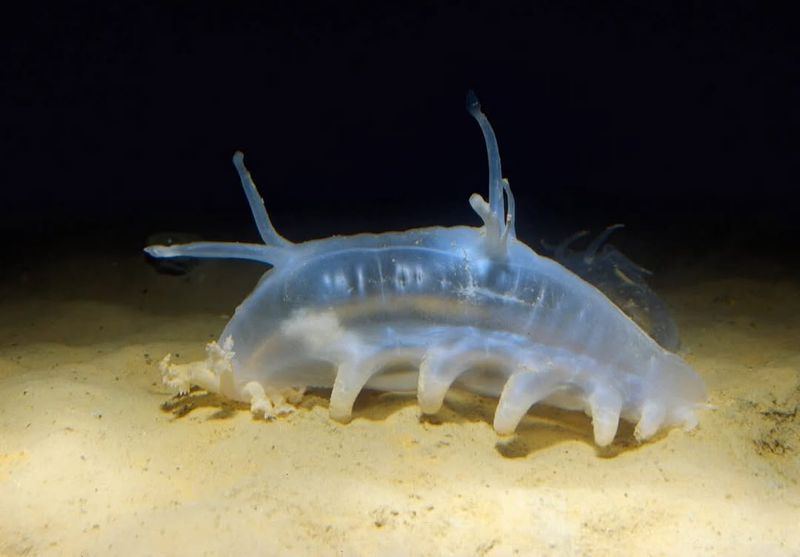
The sea pig is not your garden-variety swine, but an intriguing creature of the deep sea. With its pink, bulbous body and tube-like feet, it resembles something out of a science fiction novel. Found on the ocean floor off Oregon’s coast, the sea pig is a member of the sea cucumber family. Its peculiar appearance belies its important role in the marine ecosystem. The sea pig feeds on organic matter that settles on the seabed, playing a crucial part in nutrient cycling.
Its tube feet help it navigate the soft, muddy ocean floor, while its tentacles assist in feeding. This fascinating creature is a master of survival, thriving in the harsh conditions of the deep sea. Despite its ungainly appearance, the sea pig’s adaptations allow it to flourish in an environment where few others can.
Its presence in the deep sea is a testament to the diversity and complexity of life in Oregon’s oceanic depths. By embracing its unique niche, the sea pig contributes to the rich tapestry of marine biodiversity, reminding us of the endless wonders beneath the waves.
13. Basket Star
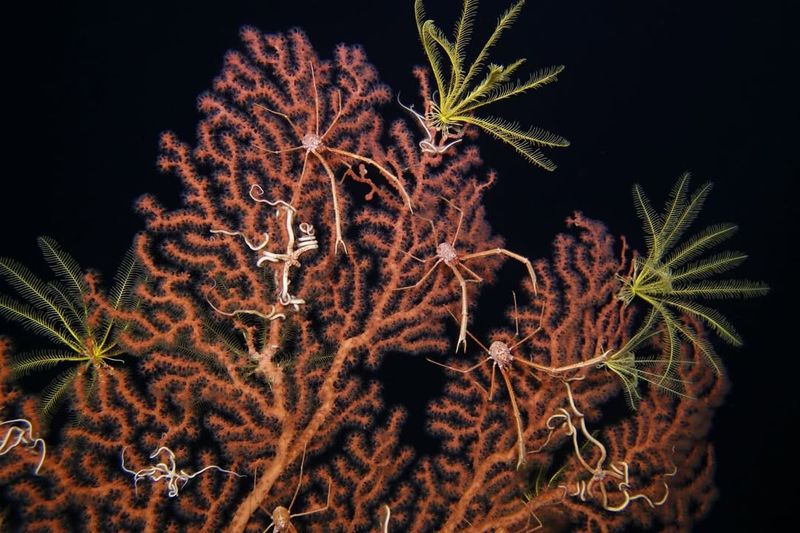
The basket star is a creature of elegance and intrigue, with arms that branch out like a living lacework. Found in the deep waters off Oregon’s coast, this echinoderm is a marvel of the ocean. Its arms, capable of twisting and coiling, allow it to catch plankton and small crustaceans with precision. By extending its arms into the current, the basket star filters food from the water, showcasing a feeding strategy both efficient and captivating.
Its delicate structure belies its resilience, as it thrives in the cold, nutrient-rich waters of the deep sea. The basket star’s presence enriches the marine ecosystem, highlighting the intricate balance of life beneath the waves. Its ability to regenerate lost arms adds to its allure, making it a subject of fascination for marine biologists. This adaptability ensures its survival in an ever-changing environment.
The basket star’s existence in Oregon’s deep ocean underscores the wonders of evolution, as it weaves its intricate dance in the shadowy depths. Truly, this creature is a testament to the beauty and complexity of marine life.



